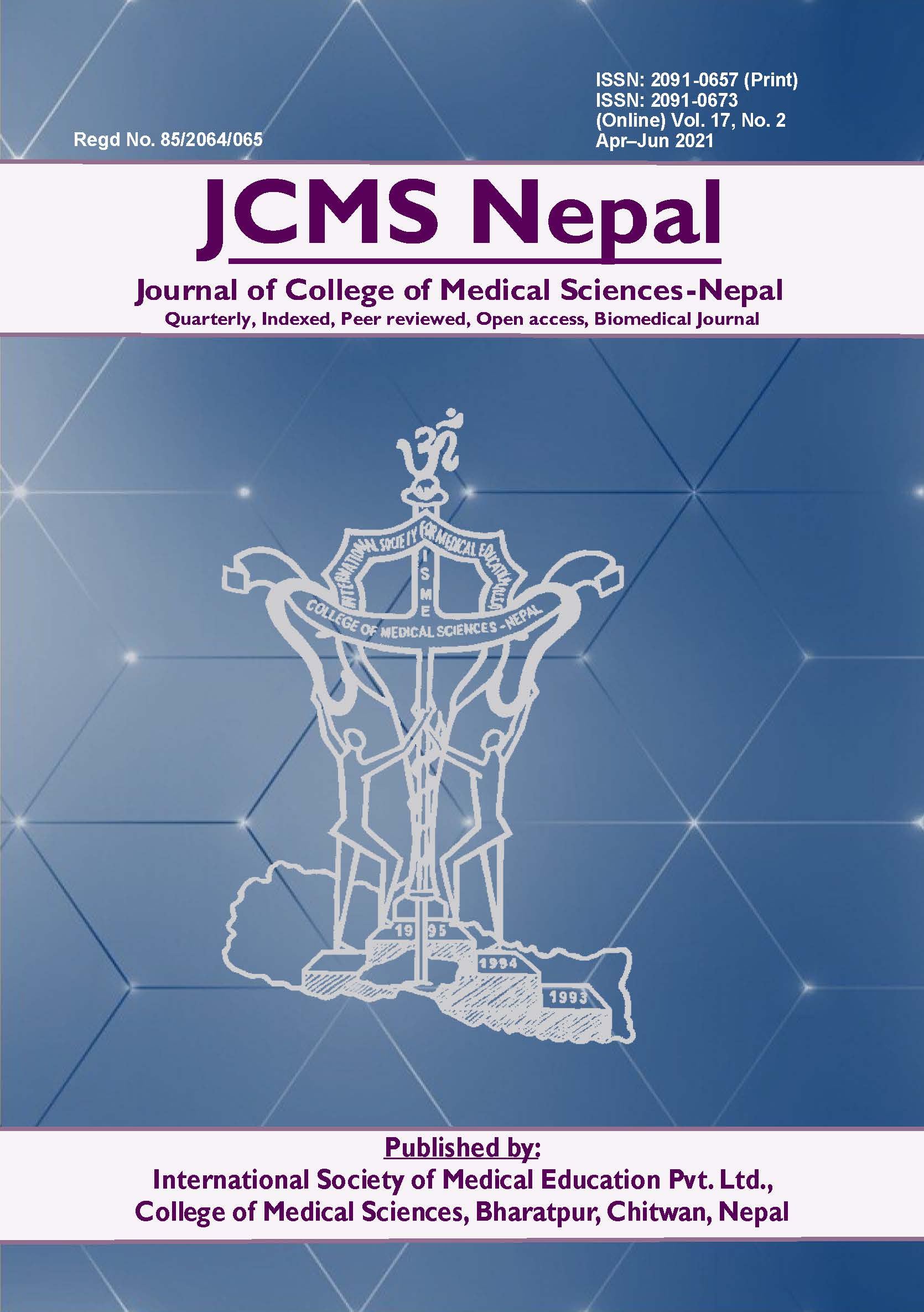Conventional Pap Smear Cytology in a Tertiary Care Center
DOI:
https://doi.org/10.3126/jcmsn.v17i2.33403Abstract
Abstract:
Background: Cervical cancer is the fourth most common cancer in women with high mortality. Since it is a preventable cancer, screening for cervical cancer with Papanicolaou test (Pap Test) is considered as the stepping stone in its cure by detecting at its premalignant state. The two methods of acquiring the sample for cytology are Conventional method and liquid based cytology.
Methods: The Pap test results of the patients who visited the outpatient clinic of the Gynecologic Department of Gandaki Medical College and Teaching Hospital from January 2012 to December 2017 were reviewed and analyzed from the medical records. The findings of Pap test results were tabulated and categorized as per Bethesda system of classification (2001).
Results: A total of 2004 Pap tests were taken. All of the patients in the study were married with mean age of 39.7±10.3 years. A total of 1291(64.42%) Pap tests were normal or negative for intraepithelial lesion whereas 578(28.84%) were inflammatory smears while 37(1.85%) were inadequate for evaluation. There was a presence of low grade intraepithelial lesion in 4(0.2%) and high grade intraepithelial lesion in 15(0.75%). Atypical squamous cell of undetermined significance (ASCUS) was noted in 11(0.55%) and frank malignancy was noted in 1(0.05%) of total Pap test samples.
Conclusion: In a developing country like Nepal, Pap test is still the preferred cervical cancer screening tool. All women should undergo the screening test for cervical cancer with any feasible available test.
Key words: Bethesda system; cervical cancer; HPV; Pap Test.
Downloads
Downloads
Published
How to Cite
Issue
Section
License
Copyright (c) 2021 Tika Kumari Gurung, Shree Prasad Adhikari, Ayushma Adhikari, Reecha Shrestha, Chum Maya Pun, Chum Maya Pun

This work is licensed under a Creative Commons Attribution-NonCommercial-NoDerivatives 4.0 International License.
This license enables reusers to copy and distribute the material in any medium or format in unadapted form only, for noncommercial purposes only, and only so long as attribution is given to the creator.




